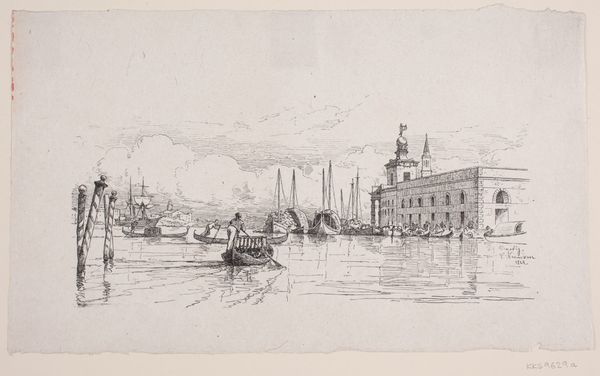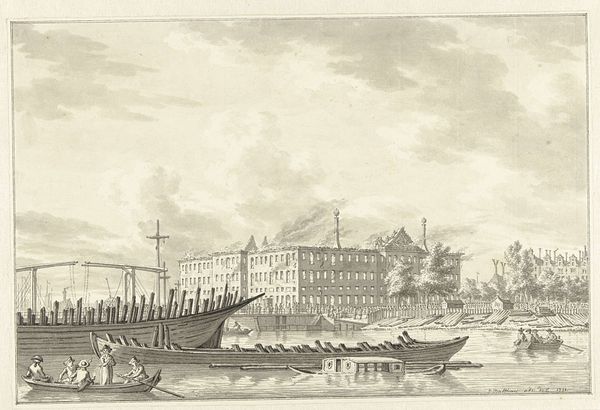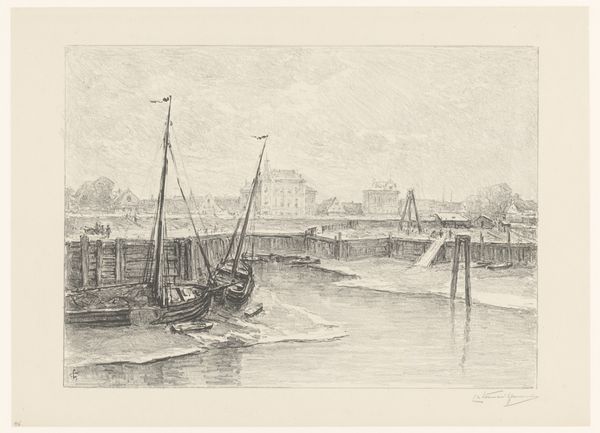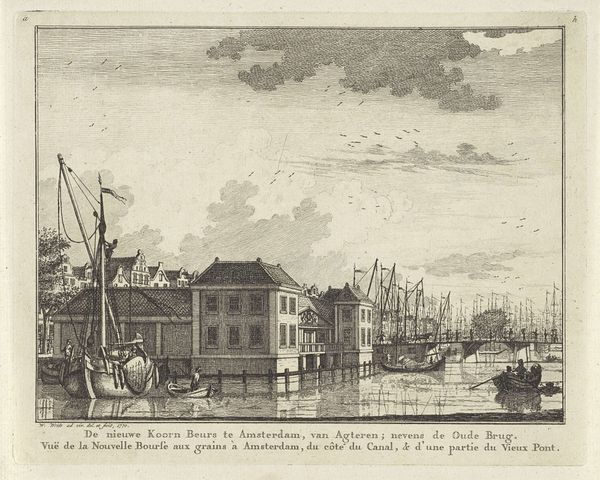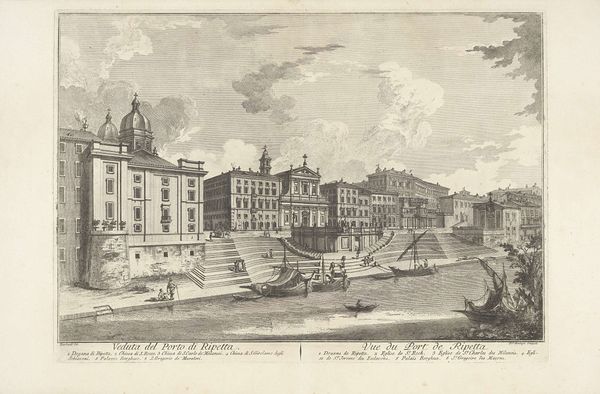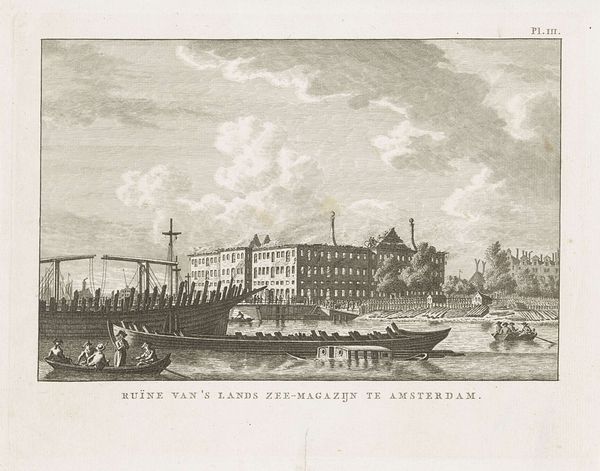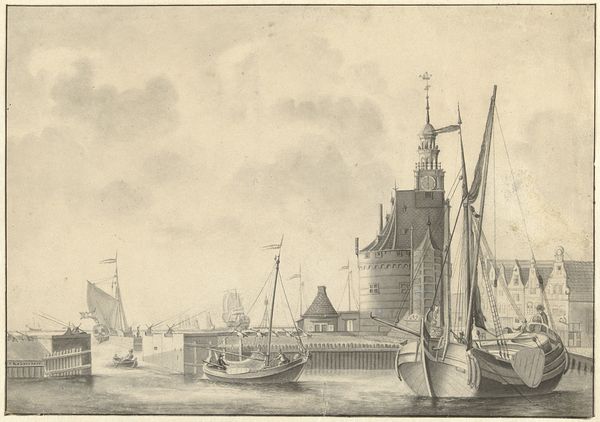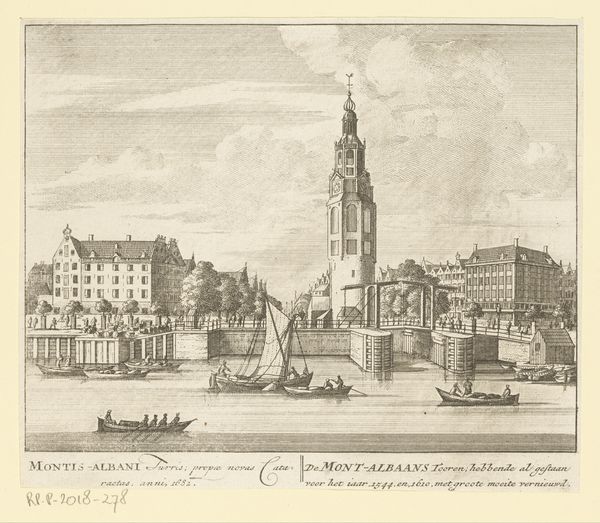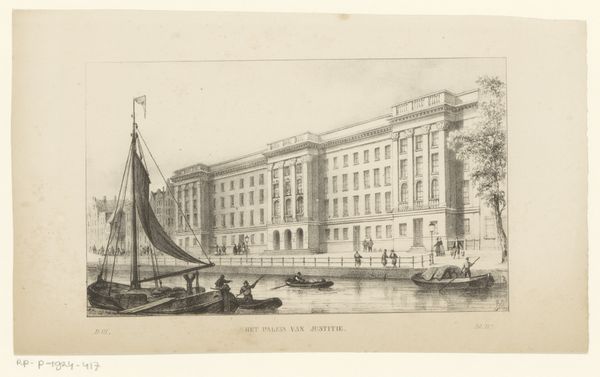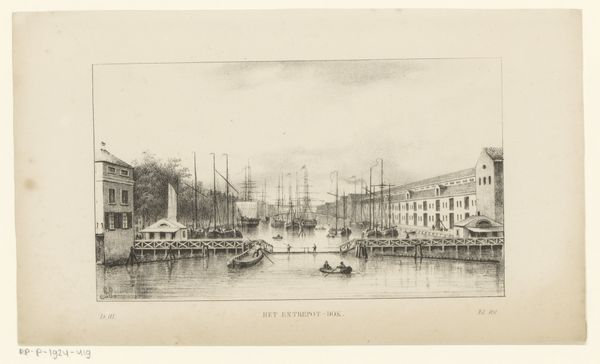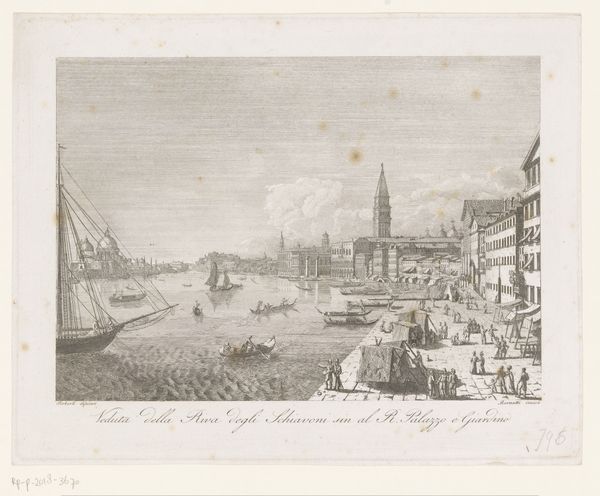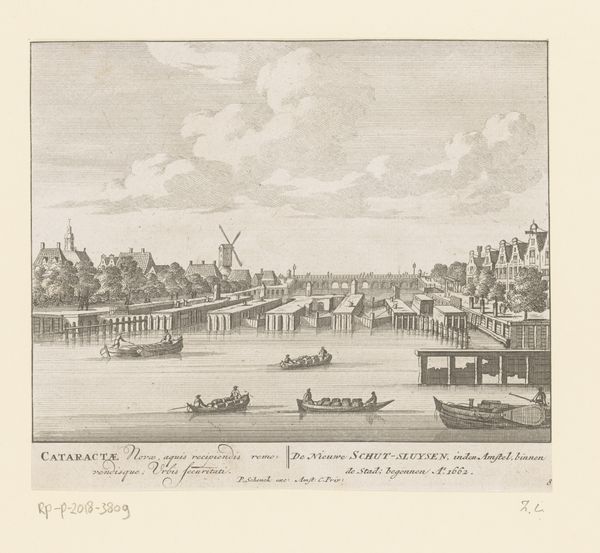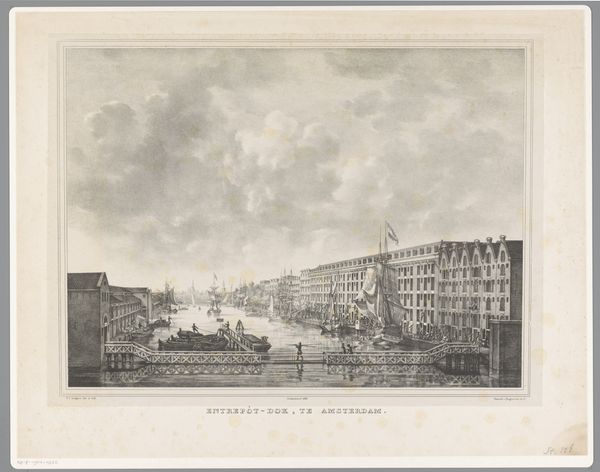
print, engraving
# print
#
landscape
#
romanticism
#
19th century
#
cityscape
#
engraving
Dimensions: height 100 mm, width 160 mm
Copyright: Rijks Museum: Open Domain
Editor: This is a print entitled "View of the Port of Bordeaux," created in 1844 by A. Beuguelet, using engraving as the medium. I’m struck by how the details in this bustling port are rendered with such fine lines. It really conveys a sense of industrial activity of the 19th Century. What’s your perspective on it? Curator: This engraving invites us to consider the means of production in a burgeoning mercantile center. Consider the labor embedded in both the scene depicted – the loading and unloading of goods, the movement of vessels – and the printmaking itself. Do you notice how the artist uses line weight and density to suggest depth and shadow? This required considerable skill and time. Editor: Absolutely! The way the buildings are defined contrasts sharply with the relative blur of the water. Is there something significant about Bordeaux as a port city at this time? Curator: Indeed. Bordeaux was a crucial hub for trade, including unfortunately, the transatlantic slave trade. So when we view this scene, we must question whose labor built those grand buildings along the port, and whose was exploited to fill the holds of those ships. Look at the smaller boats – think of them as the cogs and gears of a large, exploitative economic system. The print makes a grand scene seem very mundane. Editor: That shifts my understanding significantly. Seeing it as a representation of labour rather than simply a scenic view of a port city. It encourages a far deeper, almost uncomfortable engagement with its social context. Curator: Precisely. By focusing on the materiality and production – both of the image and within the image – we reveal its complex relationship to the society that produced it. Editor: I hadn't considered that. Thank you. I now perceive the print as a document loaded with complex history.
Comments
No comments
Be the first to comment and join the conversation on the ultimate creative platform.
